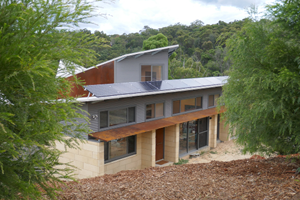 Bushfire has long been a part of Australian landscape ecology and mythology, but climate change is now driving an increase in fire emergencies and a greater regulatory response. There are new levels of bushfire frequency, severity and unpredictability across much of Australia – and indeed globally. The previous bushfire season pattern is no more, with record heat and drying creating extreme fire weather patterns. The risk is spreading from the rural and urban-bushland interface, across more of the landscape and into towns and cities. Increasingly, an expansion of development types in bushfire prone areas — not just dwellings — will need to address bushfire risk from a mandated bushfire assessment upfront through to a regulated planning and construction response. The National Construction Code with state/territory variations now calls up the bushfire Australian Standards and the NASH Standard (steel) as Deemed-to-Satisfy alternatives.
Bushfire has long been a part of Australian landscape ecology and mythology, but climate change is now driving an increase in fire emergencies and a greater regulatory response. There are new levels of bushfire frequency, severity and unpredictability across much of Australia – and indeed globally. The previous bushfire season pattern is no more, with record heat and drying creating extreme fire weather patterns. The risk is spreading from the rural and urban-bushland interface, across more of the landscape and into towns and cities. Increasingly, an expansion of development types in bushfire prone areas — not just dwellings — will need to address bushfire risk from a mandated bushfire assessment upfront through to a regulated planning and construction response. The National Construction Code with state/territory variations now calls up the bushfire Australian Standards and the NASH Standard (steel) as Deemed-to-Satisfy alternatives.
This Note outlines the impact of climate change on bushfire conditions in Australia and the ensuing regulatory imperatives for planning and construction within bushfire prone areas. It provides an overview of bushfire attack, the Fire Danger Index, the regulatory framework plus development issues and concerns currently applicable to states and territories. Planning and design considerations, including siting and landscaping concerns, are not covered by this note and will be the subject of a separate note.
